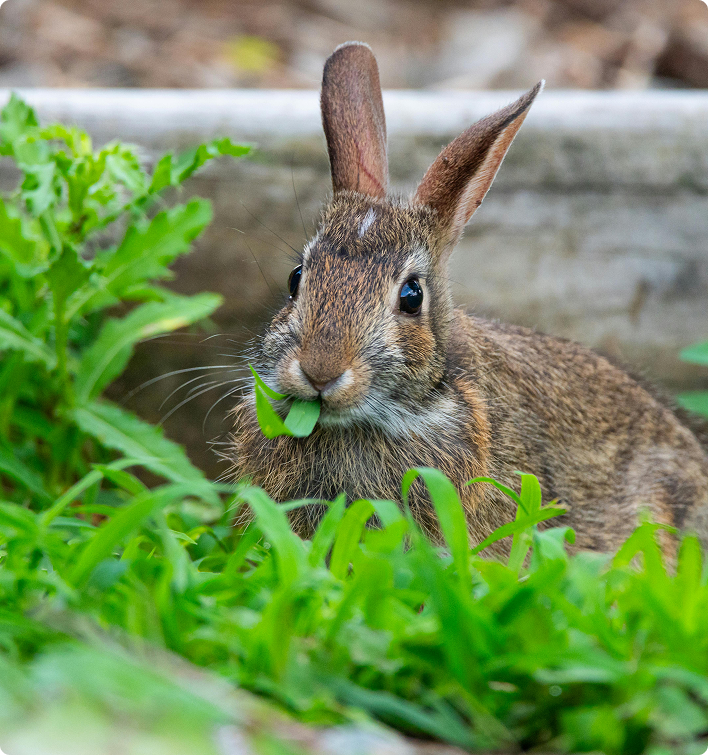3. Bleeding Heart (Dicentra spectabilis)
Why they resist: Its bitter taste and toxic compounds make it a hard pass for wildlife.
Bonus points: The heart-shaped blooms dangle like charms on a bracelet, adding romance to your spring garden.
4. Snapdragons (Antirrhinum majus)
Why they resist: Snapdragons have a bitter taste and tough texture that deer and rabbits find unappetizing.
Bonus points: These vibrant, spiky flowers come in a variety of colors and add vertical interest to your garden beds.
Summer
As the weather heats up, your garden’s buffet appeal doesn’t have to. These summer survivors will keep the color coming without turning into chow.
1. Coreopsis (Coreopsis spp.)
Why they resist: Its slightly bitter foliage doesn’t appeal to deer or rabbits.
Bonus points: This cheerful, daisy-like perennial blooms nonstop and attracts pollinators instead of pests.
2. Yarrow (Achillea millefolium)
Why they resist: Yarrow’s spicy scent and feathery foliage repel nibblers.
Bonus points: It’s a powerhouse for pollinators, drought-resistant, and comes in a rainbow of colors.
3. Lavender (Lavandula spp.)
Why they resist: The strong fragrance that we adore is a huge turn-off for deer and rabbits.
Bonus points: It’s low-maintenance, smells divine, and adds a Mediterranean vibe to your garden.
4. Vinca (Catharanthus roseus)
Why they resist: The tough, leathery leaves and slightly toxic sap make vinca unappealing to wildlife.
Bonus points: These low-growing plants provide vibrant, continuous blooms in hot summer conditions and thrive in both sun and shade.
Fall
Fall doesn’t have to be all about pumpkins and mums. Extend your garden’s glory days with these resistant plants that bring in late-season beauty.
1. Sedum (Hylotelephium ‘Autumn Joy’)
Why they resist: The thick, succulent leaves aren’t on the menu for most wildlife.
Bonus points: Its pink flowers transition to a rich rust color as the season progresses.
2. Ornamental Grasses (Miscanthus, Pennisetum, etc.)
Why they resist: Deer and rabbits usually steer clear of tough, fibrous leaves.
Bonus points: They add height, movement, and texture to your garden, even in the cooler months.
3. Asters (Symphyotrichum spp.)
Why they resist: Asters’ slightly bitter foliage makes them less attractive to critters.
Bonus points: These daisy-like flowers bring a pop of color to your garden just as everything else starts winding down.
4. Japanese Anemone (Anemone hupehensis)
Why they resist: Deer and rabbits typically avoid their fibrous roots and slightly bitter foliage.
Bonus points: Their delicate blooms in shades of pink and white are perfect for adding a soft, romantic feel to your fall garden.
Winter
Winter gardening may seem challenging, but some plants keep things interesting (and wildlife-free) even in the cold.
1. Hellebores (Helleborus spp.)
Why they resist: Their leathery leaves and toxic compounds deter nibblers.
Bonus points: Known as Lenten Roses, these evergreen perennials bloom in late winter when little else does.
2. Boxwood (Buxus spp.)
Why they resist: The dense, evergreen foliage isn’t tasty to deer or rabbits.
Bonus points: Perfect for hedges or topiaries, boxwoods add structure to your winter landscape.
3. Winterberry Holly (Ilex verticillata)
Why they resist: While the berries attract birds, the leaves are not appealing to larger wildlife.
Bonus points: The bright red berries stand out beautifully against snowy backdrops.
4. Evergreen Camellias (Camellia sasanqua)
Why they resist: The thick, waxy leaves are less appealing to deer and rabbits.
Bonus points: These shrubs bloom in late fall to winter, adding color and elegance when most plants are dormant.
Bonus Tips for Zone 7 Gardening
Use Repellents:
Even resistant plants can fall victim to determined critters. Sprays and granules can add extra protection.
Diversify Your Plantings:
A mix of textures, scents, and heights can confuse wildlife and make your garden less inviting.
Mulch Smartly:
Avoid mulches that might attract critters (like fresh bark) and opt for gravel or pine needles instead.
Fencing and Barriers:
If all else fails, physical barriers are a foolproof solution.

